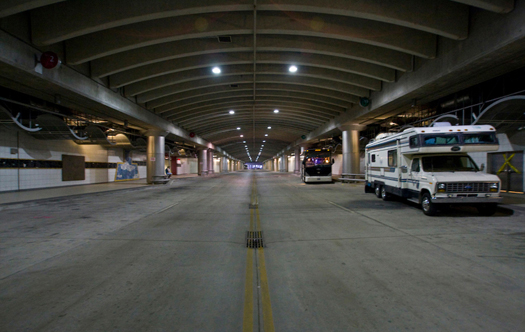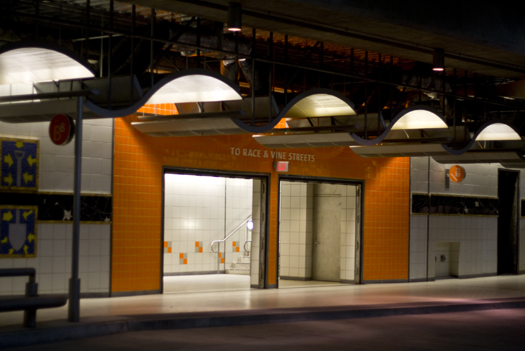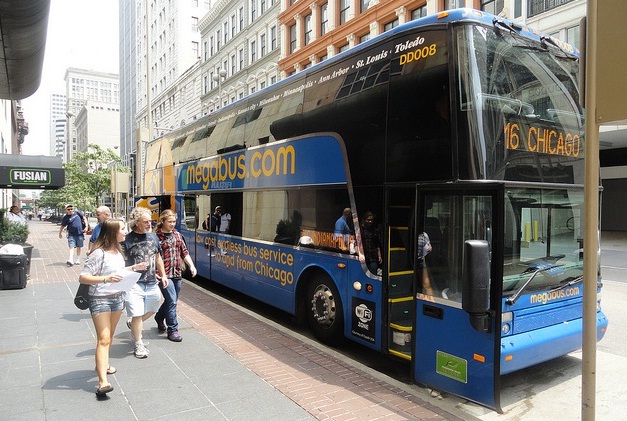Megabus is experiencing tremendous ridership growth throughout the Midwest, and is working to expand their intercity bus service to and from places like Cincinnati. In 2010 the company experienced amazing growth of 65 percent and now records $100 million in business annually on 135 buses to 50 different U.S. cities daily.
The growth has been so profound that the company has spawned the “Megabus effect” which is driving up ridership for providers such as Greyhound and BoltBus. And cities all across the U.S. are scrambling to offer prime locations for Megabus to utilize.

Megabus picks up passengers at 4th & Race Street in downtown Cincinnati – Photograph by Thadd Fiala for UrbanCincy.
The European-based company prides itself on its low fares, and does so in part through its low overhead. The intercity bus service accomplishes this by picking up and dropping off passengers along the street. Thus no facility or overhead costs are needed for their operations, but passengers must deal with inclement weather and lack of waiting area typically provided at other transport facilities.
Greyhound historically located its facilities on the edges of downtowns in otherwise rundown areas. This model is changing though as Greyhound attempts to attract new choice riders to its operations. The new Greyhound Express services include buses similarly equipped to Megabus and BoltBus.
Fortunately for Cincinnati, city leaders have an underutilized piece of infrastructure built beneath 2nd Street. The $18 million Riverfront Transit Center (RTC) was completed in 2002 as part of the reconfiguration of Fort Washington Way (FWW), and has sat there rarely used ever since. Its presence presents the opportunity for Cincinnati to create a consolidated bus terminal in the heart of its urban core without negatively impacting the quality of life of those around it.


Riverfront Transit Center interior photographs by Ronny Salerno.
The opportunity of both bus service providers being able to locate within a consolidated, covered and modern facility in the heart of Cincinnati’s downtown would seem to be attractive. Passengers could wait inside and out of the elements; hotels, shops and restaurants would greet arriving passengers above at The Banks; easy access to local bus and streetcar service would be available, and the providers would have a protected area to park their buses.
Meanwhile, the city would be able to finally utilize one of its most unique pieces of infrastructure. Future bus service providers could also tap into the RTC until capacity is reached. This would allow the Queen City to have a centrally located, consolidated intercity bus terminal convenient to travelers and beneficial to service providers.
Financing of maintenance costs would have to be determined, but a deal on Greyhound’s land and some sort of a license fee agreement with Megabus and others could be reached to help offset costs.
Building the RTC today would most likely prove to be cost prohibitive. Fortunately, city leaders had the foresight to build this piece of infrastructure beneath 2nd Street. City leaders should move to free the already congested 4th Street of Megabus operations, open up land adjacent to the city’s new casino for future economic development, and establish a center that will facilitate the addition of other intercity bus service providers.
